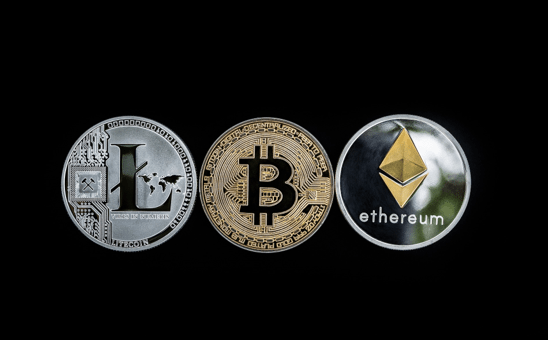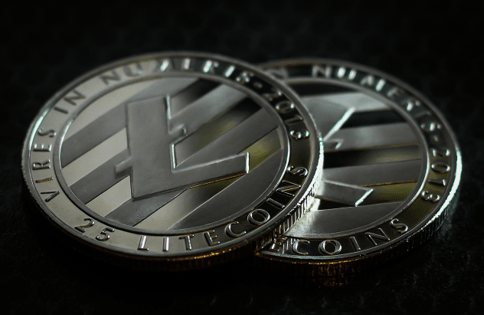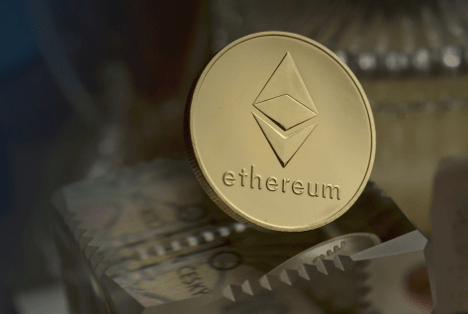Pinning two hyped cryptos: Litecoin vs Ethereum [An Explainer for Beginners]
Even though Bitcoin is the most prominent cryptocurrency in the market and media, several alternative possibilities exist for those who want to invest in cryptocurrencies.
On the market today, there are hundreds of distinct cryptocurrencies, or altcoins, each with its unique features and advantages. Litecoin and Ethereum, two of the most popular cryptocurrencies, are often ranked in the top five by market capitalisation.
What is it about these coins that makes them so popular, and how do they differ?
Litecoin and Ethereum are frequently contrasted, but they are extremely different from a technological aspect, and investors may select one over the other for various reasons.
Let’s get down to the nitty-gritty. But before that, as a trader, you should know where to trade various coins to be open to others’ potential. It also takes a while to be familiar with different crypto trading platforms or brokers, sometimes months and even years.
From Binance to Kraken, there are a lot of choices to pick from. But there is a range of unique services like the Biticodes-app.com that can help you connect with such institutions. It is worth checking out for those trying to get in on the crypto market.
Comparative and Disparate Aspects
Both cryptocurrencies may be acquired on most major exchanges, with rapid transaction times (faster than Bitcoin).
The two networks are open source and peer-to-peer, although Ethereum is considering switching to Proof of Stake mining.
There is a maximum of 84 billion LTC in circulation. The supply of Ethereum is not limited. Block incentives for validators are reduced to keep supply under control in Ethereum.
Both Litecoin and Ethereum charge transaction fees. Ethereum may be used to make contracts and transfer property, while Litecoin is mostly utilised as a medium of exchange.
Litecoin’s Most Important Features
Charlie Lee, a former Google employee, founded Litecoin (LTC) in 2011. It’s a branch of the Bitcoin blockchain; therefore, it has many characteristics of the original.
When a proof-of-work blockchain’s miners can’t agree on a new version, miners who didn’t agree to upgrade to the new version continue to mine the old blockchain, which is now a fork. Because not enough miners agreed to Charlie Lee’s proposed modification to the Bitcoin network, a new cryptocurrency known as Litecoin was created due to the split.
Lee created Litecoin to provide a quicker, fairer, and more affordable Bitcoin alternative. Litecoin’s transaction fees are lower than Bitcoin’s, although mining a block takes four times as long as with Litecoin. A Bitcoin block takes 10 minutes to mine, but a Litecoin block takes 2.5 minutes.
This implies that each transaction is finished in less time. Litecoin’s total supply is also substantially bigger than Bitcoin’s.
Ethereum’s most notable features
Ethereum was conceptualised in 2013, by Bitcoin enthusiast and programmer Vitalik Buterin, who published a whitepaper explaining the technology’s applications. The Ethereum blockchain, which went live in 2015, was built by other engineers who shared the vision.
Ethereum is primarily intended to serve as a decentralised application platform, while it may work as a means of exchange like other cryptocurrencies. The Ethereum currency (ETH) serves as the fuel for the platform’s contracts and applications. Smart contracts may be built on the Ethereum blockchain.
Contracts may include various information and transactions, including the transfer of property, establishing regulations, exchanging money, etc.
To a great extent, Ethereum was responsible for initiating coin offers (ICOs) in 2017. Developers may create their bespoke token projects on the network and then sell those tokens to interested investors.
Ethereum’s blockchain is considerably quicker than Bitcoin’s or Litecoin’s. Mining takes place every ten to twenty seconds, depending on the computer’s power.
Bottomline
Litecoin and Ethereum, in contrast to many smaller cryptocurrencies, are expected to last for a long time. Investors were concerned because they didn’t want to put their money into a currency that could go away or shut down.
Each currency has a long history in the crypto world, a loyal fan base, and a team of developers who are always trying to improve it. It is also listed on almost every major exchange.
SegWit may be deployed on the Bitcoin blockchain in the future, which might impact Litecoin’s value. Litecoin would lose one of its present advantages over Bitcoin if this happened.
There are advantages and disadvantages to using either Bitcoin or Ethereum as a medium of exchange. As a result of quicker block generation times for Ethereum, transactions may theoretically be faster than those for Litecoin. In contrast to Litecoin, the Ethereum network has a far larger data storage capacity, which might impact transaction speeds. In other words, Ethereum is meant to be used for more than just transactions and information sharing.
It is also not uncommon for crypto investors to own a mix of ETH and LTC in their portfolios.


